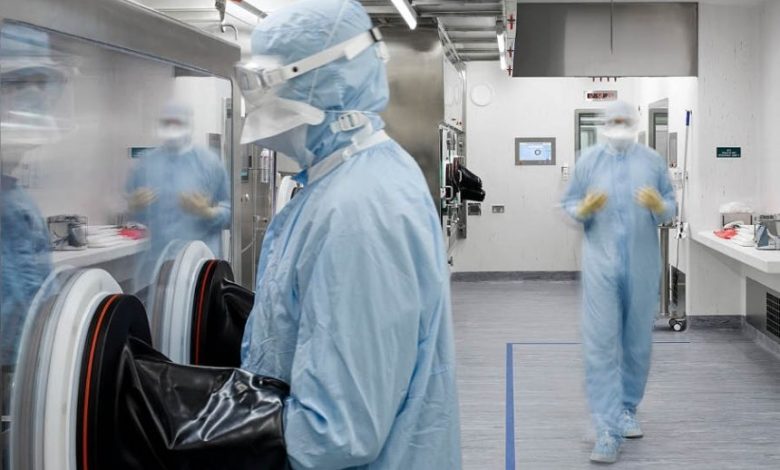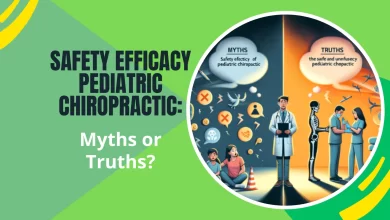ADVANCEMENTS IN CYTOTOXIC DRUGS AND HPAPI MANUFACTURING: ENSURING SAFETY AND PRECISION

With advances in clinical pharmacology and oncology research, and the increasing demand for targeted therapies, high potency active pharmaceutical ingredients (HPAPIs) and cytotoxic drugs have become the key focus of researchers and drug manufacturers across the world. HPAPIs, which include cytotoxic APIs, are drug substances that are formulated to manufacture high potency drug products. Cytotoxic drugs are a category of highly potent drug products that have captured significant attention from pharmaceutical companies worldwide. This is primarily due to their wide applications in the treatment of cancer indications (oncology being the most active pharmaceutical segment). Some of the key benefits of these compounds include low dose requirements, less side effects and low cost. With over 40% of the total number of drugs worldwide being classified as highly potent, the HPAPI market is currently cited as one of the most powerful and active segments of the pharmaceutical industry. The global cytotoxic drugs and HPAPI manufacturing market is anticipated to grow at a CAGR of around 11.6%, till 2035. Driven by the rising demand for targeted therapies, the cytotoxic drugs and HPAPI manufacturing market is anticipated to grow at the higher pace in the coming decade.
HIGH POTENCY ACTIVE PHARMACEUTICAL INGREDIENTS OVERVIEW
High Potency Active Pharmaceutical Ingredients are pharmacologically active drug substances that are known to be very specific and highly effective at small doses. These include both small molecules and biologics. They offer a significant set of advantages over traditional APIs. This has led to their widespread production and extensive use in the treatment of various indications including cancers, respiratory disorders and hormonal imbalances. HPAPIs, due to their selective mode of action, are effective in much smaller quantities than other therapeutic products. Hence, the chances of a patient facing adverse side effects are low. Furthermore, they are stable compounds and are retained (in their active form) within the body for a longer duration and, therefore, are not required to be administered frequently.
TYPES OF HPAPI
The new generation of APIs being developed which are highly complex in nature include peptides, HPAPIs, oligonucleotides and sterile API. The different types of HPAPIs based on their biological characteristics includes:
- Antibody-Drug Conjugates: ADCs are monoclonal antibodies (mAbs) attached to surface antigens by chemical or a liable linker. The ADCs bind to specific proteins or peptides in cancer cells with very high specificity and efficacy influencing the biological functions. The linked drug enters the diseased cell and kills them without harming other cells.
- Cytotoxic Drugs: Cytotoxic drugs are therapeutic agents that are known to have a toxic effect on cells, mainly affecting cell reproduction. They have the ability to prevent rapid growth and division of cells. Hence, they are commonly used in the treatment of cancer, as part of the chemotherapy regime.
- Peptides: Peptides have developed as highly potent signal transduction molecules exhibiting strong physiological effects and are natural biological molecules having group of amino acids linked by peptide bonds. They consist of two or more amino acids and are synthesized naturally from transcription of a sequence of genetic code.
- Hormones: Biologic HPAPIs which are not classified as oncology drugs include hormones, narcotics and retinoids. Hormones are chemicals produced by endocrine glands. They are termed as chemical messengers of the body as they travel via blood from tissues to organs and are responsible for affecting various processes in the body.
- Beta-Lactam Compounds: Beta-Lactam compounds are a product group of HPAPIs which require the dedication of plants. They are antibiotics with presence of a beta-lactam ring in their nucleus.
- Prostaglandins: Prostaglandins are natural occurring lipid autacoids derived from arachidonic acid associated with HPAPI application and are made up of unsaturated fatty acids involving a cyclopentane ring. They participate in various functions such as contraction and relaxation of smooth muscle, the dilation and constriction of blood vessels, control of blood pressure, and modulation of inflammation.
- Cytostatic: These are drugs that slows down or stops the growth of cancer, without killing them. These are called chemotherapeutic agents derived from plants or synthetic substances and provide anticancer effect by inhibiting cell division. Fast growing cells are the targets of cytostatic drugs which include bone marrow, oral and gastrointestinal mucosa as well as hair follicle cells.
- Steroids: Steroids are man-made chemicals which act like hormones to reduce inflammations. There are two types of steroids, corticosteroids and anabolic steroids. Corticosteroids are produced by adrenal gland and play a role in controlling stress to decrease inflammation whereas, anabolic steroids regulate the manufacturing of testosterone in the testicles and the ovaries.
CONTRACT MANUFACTURING IN HPAPIS AND CYTOTOXIC DRUGS
The HPAPI market is expected to grow significantly over the next few years as a large number of drug candidates in the oncology and immune therapy domain are potent compounds that require special handling during the manufacturing process. This includes additional manufacturing capabilities, specialized facilities, equipment and highly skilled labor. At present, numerous pharmaceutical companies, start-ups as well as established players in the industry are involved in strategic collaborations with contract manufacturing organizations (CMOs) in order to avail the plentiful services that they have to offer. Apart from their suitably equipped manufacturing capabilities, CMOs also provide other services such as supply chain management, process / product optimization and fill / finish capacity.
Manufacturing HPAPIs is a complex process and therefore, there are various challenges associated with the process. The biggest challenge is to inhibit cross-contamination during manufacturing followed by protection of environment, workers and everyone across the supply chain. It is equally important to choose the correct containment and protective strategy, inclusive of containment equipment, procedures and PPE. HPAPIs handling generally require continued investment in the area of safe handling, the need of global guidance and advance technical expertise adding to the challenges in the domain. Correct installation and setup along with proper employee training is crucial for protection of workers. Proper management of waste remains and implementation of appropriate methods for sampling and testing API quantity is an essential aspect.
FEATURES REQUIRED IN A CMO
The practice of contract manufacturing is as common in case of HPAPIs and cytotoxic drugs as it is for other pharmaceutical products. The following factors make it even more essential for a pharmaceutical company to outsource their production processes to CMOs.
- Increased cGMP and EHS (Environment, Health and Safety) compliance requirements for cytotoxic compounds as compared to other therapeutic products
- Requirement of advanced technical expertise to handle these highly potent products
- Necessity of specialized equipment and facility design meeting the required containment controls for production
- Requirement of regulatory expertise; the absence of a formal set of guidelines on the safe handling of highly potent substances makes it easier for a drug developer to outsource its production process to a CMO that has more experience in this field
- Setting up specialized manufacturing units for this purpose involves huge capital investments
Although various parameters such as cost effectiveness and the ready availability of technical capabilities make contract manufacturing an attractive option for drug developers and pharma companies, the selection of a CMO for HPAPI production continues to be a big challenge in the current scenario. Companies generally look for the following features in a CMO to assess its ability to manufacture HPAPIs:
- Proper engineering controls and cleaning procedures to prevent cross-contamination
- Risk assessment tools and suitably established SOPs
- A convincing track record that can be judged through EHS audits
- Capacity and price
- Specialized infrastructure and highly trained personnel with analytical and technical expertise
- Presence of an operator training program
The lack of a single universally accepted system of classification makes the toxicity and potency evaluations for such drugs a highly challenging aspect. The absence of a common framework has caused different companies to develop and / or adopt different systems of classifications, thereby creating a lot of ambiguity in this space.
CONCLUDING REMARKS
HPAPIs are a rapidly growing segment of the pharmaceutical industry; 45% of the drugs globally are highly potent leading to specialized HPAPI production. This is primarily due to their wide applications in the treatment of cancer indications (oncology being the most active pharmaceutical segment). HPAPIs, due to their selective mode of action, are effective in much smaller quantities than other therapeutic products. Increasing demand for HPAPIs is fueling the need for high potency handling capabilities. With the rise in demand, manufacturers are looking for more innovative containment strategies to ensure both the quality of final products and safety of people working in this domain. However, the challenges and regulatory hurdles in the processing of HPAPIs make choosing the right CMO even more important.
About Roots Analysis
Roots Analysis is a global leader in the pharma / biotech market research. Having worked with over 750 clients worldwide, including Fortune 500 companies, start-ups, academia, venture capitalists and strategic investors for more than a decade, we offer a highly analytical / data-driven perspective to a network of over 450,000 senior industry stakeholders looking for credible market insights. All reports provided by us are structured in a way that enables the reader to develop a thorough perspective on the given subject. Apart from writing reports on identified areas, we provide bespoke research / consulting services dedicated to serve our clients in the best possible way.




